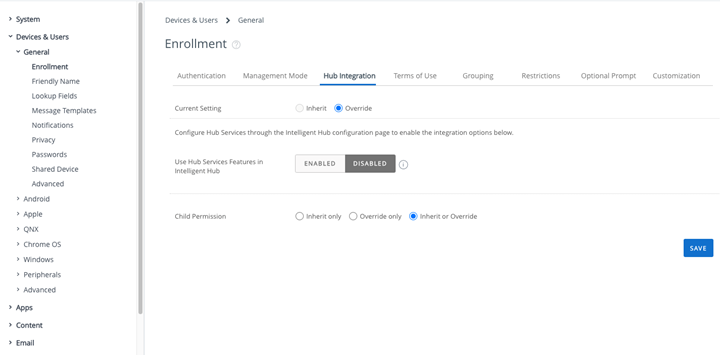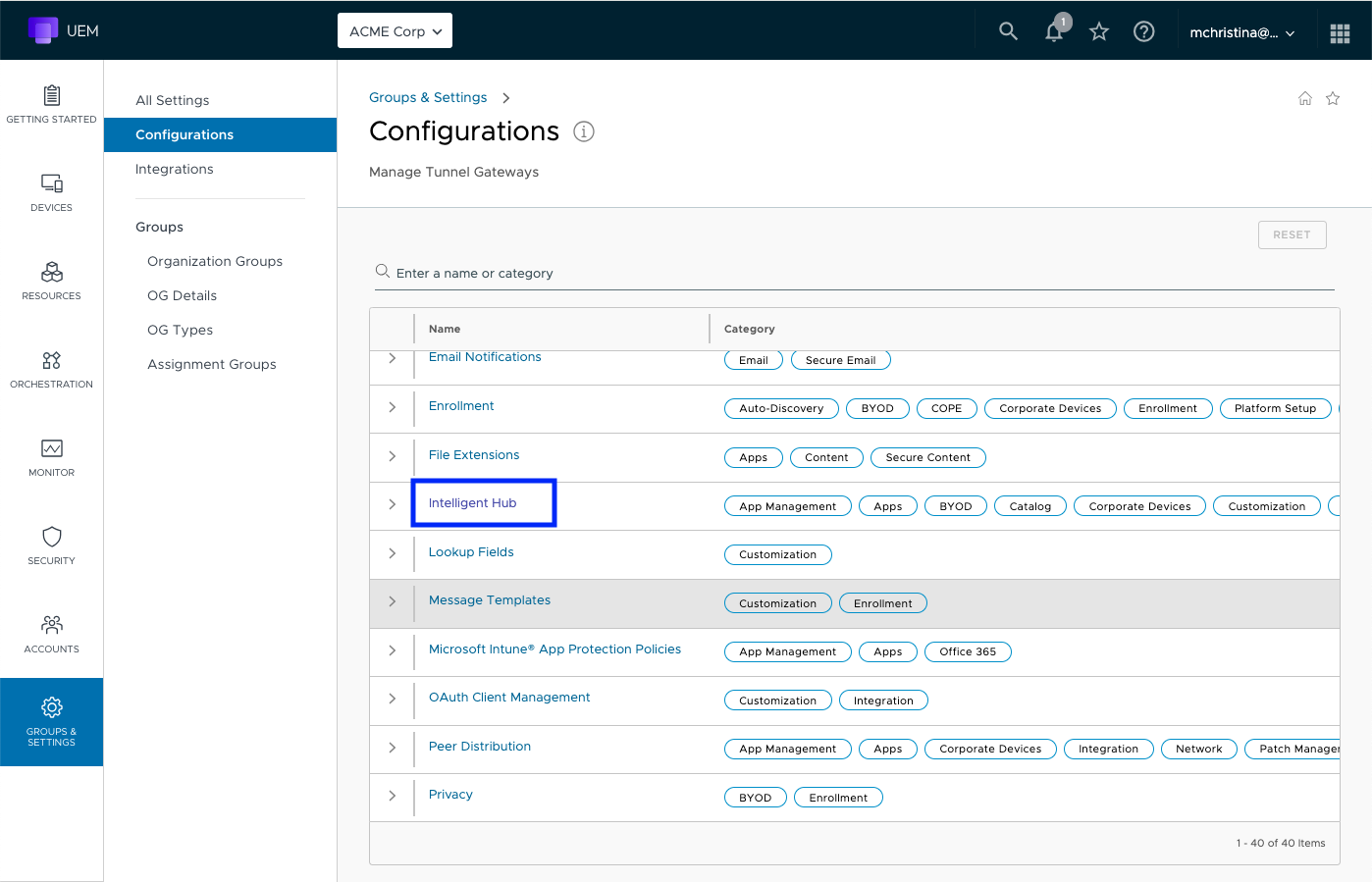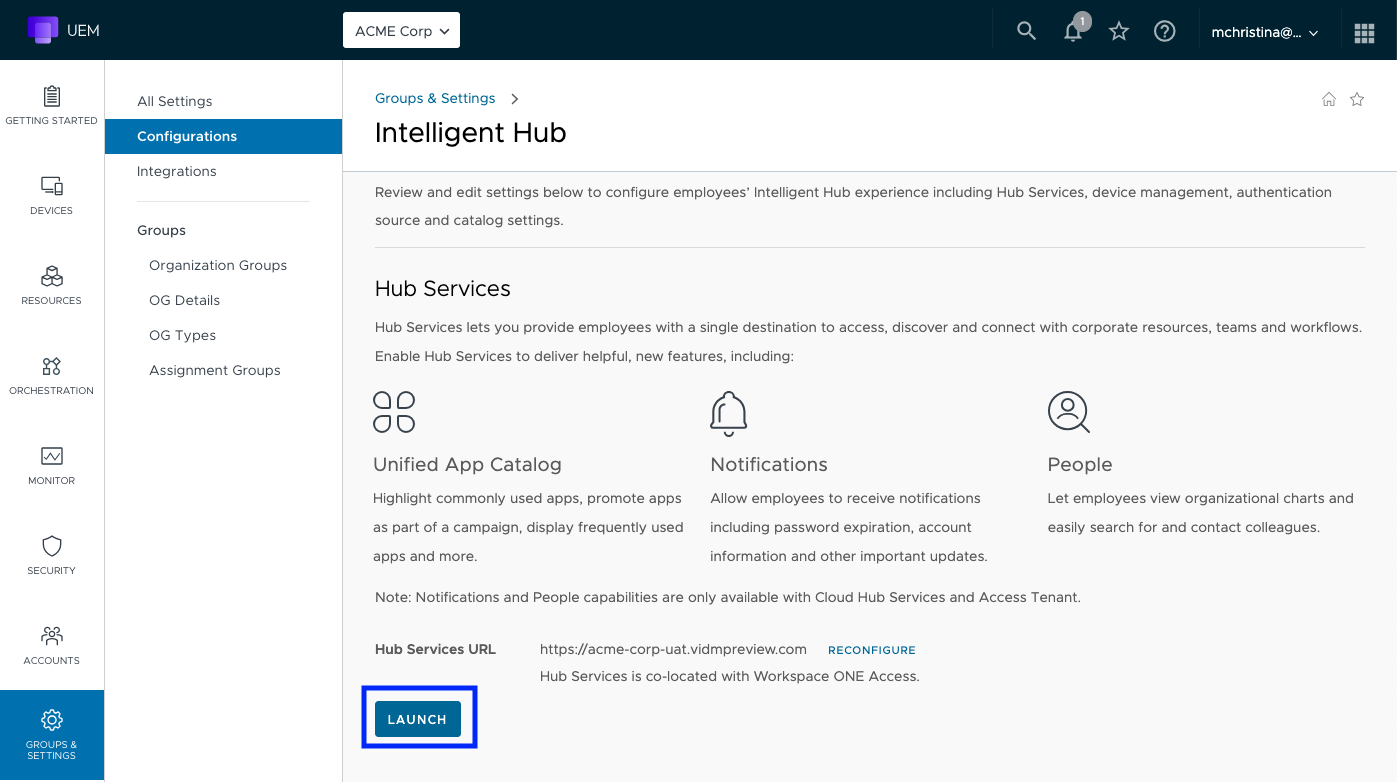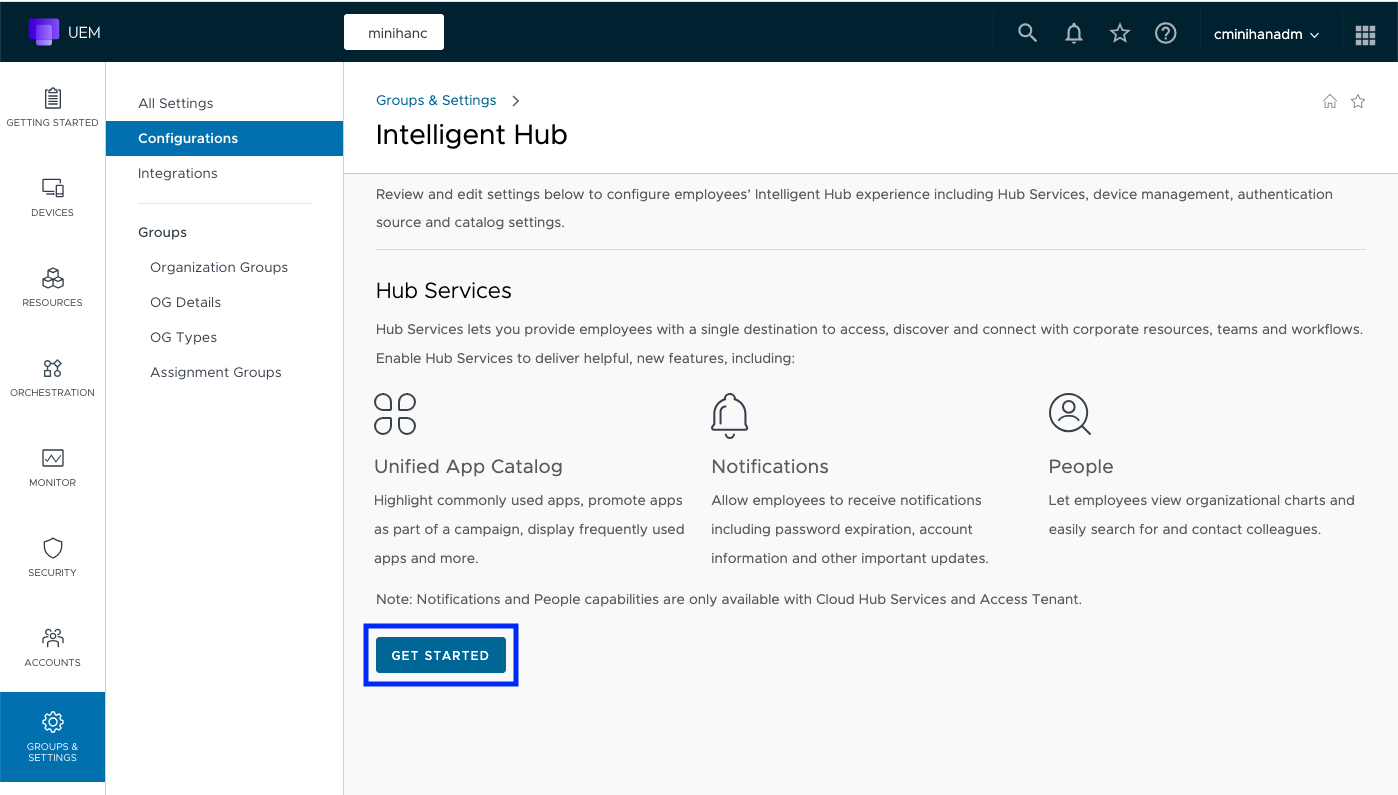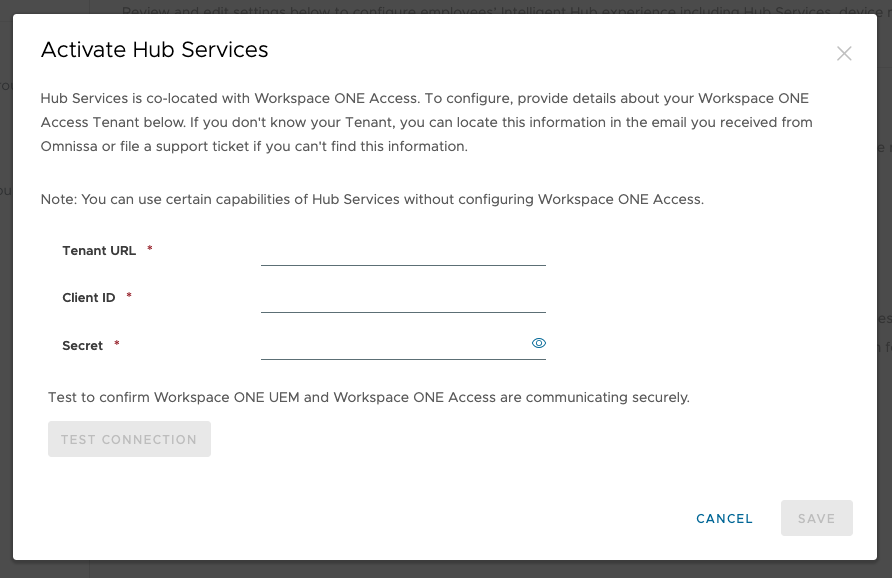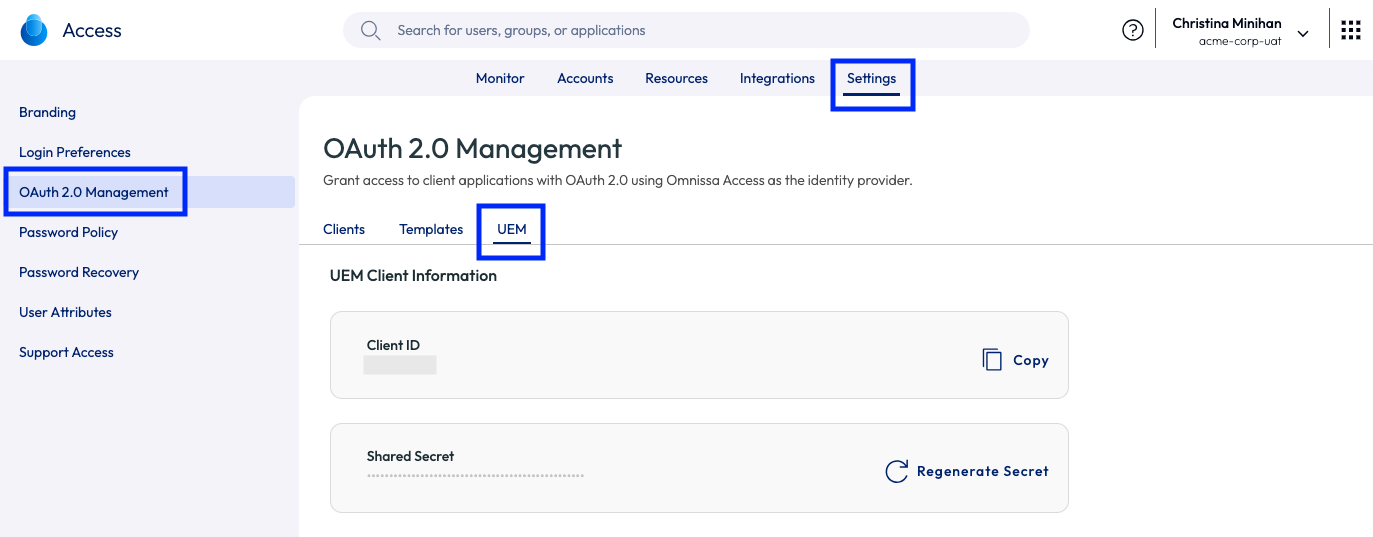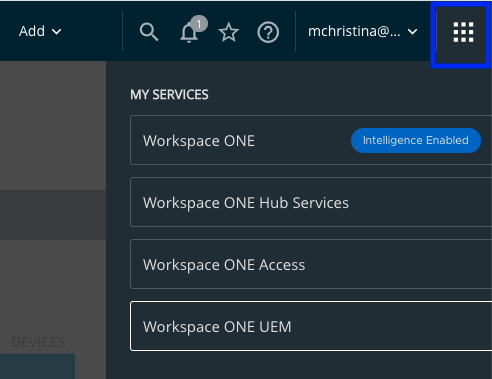Moving to the Workspace ONE Intelligent Hub app catalog
Migrating from the legacy web clip app catalog to Intelligent Hub
If you are wondering about the difference between the legacy AirWatch web clip app catalog and the Workspace ONE Intelligent Hub app catalog and how to migrate, this is the article for you. There are several considerations, and this guide covers them all. Find out everything you need to know to migrate successfully.
Purpose of this guide
This guide introduces you to the Workspace ONE Intelligent Hub app catalog and takes you through the steps to enable the catalog, customize the experience for employees, and deactivate the legacy web clip app catalog. In addition, you see how to add SaaS apps, virtual apps and desktops, and native apps to the catalog in both Workspace ONE UEM and Omnissa Access to create a truly unified app catalog for end users.
Audience
This guide is intended for IT administrators and product evaluators who are familiar with Workspace ONE Unified Endpoint Management (UEM) and legacy AirWatch. Knowledge of Omnissa Access is also helpful.
What and why
Before you implement the Workspace ONE Intelligent Hub app catalog, it is important to understand why it is more beneficial than the legacy AirWatch web clip.
Workspace ONE Intelligent Hub and Hub Services
Workspace ONE Intelligent Hub is the digital workspace application for all employees, on any device, no matter where they choose to work. Intelligent Hub empowers employees with consistent access to all the tools and resources they need for work. Organizations can customize the Intelligent Hub app to provide a branded experience for their employees within Hub Services, the admin console co-located with Omnissa Access, including a unified app catalog with single-sign-on, customized ‘For You’ notifications and corporate communications, self-service resources, and an intranet home page. Think of Hub Services as the server component and admin console and Intelligent Hub as the user-facing client.
To learn more about Workspace ONE Intelligent Hub and the many features available, check out these resources:
- What Is Workspace ONE Intelligent Hub?
- User Experience in the Workspace ONE Intelligent Hub app
- Workspace ONE Intelligent Hub FAQ
Comparing the Intelligent Hub app catalog to the legacy AirWatch web clip
Intelligent Hub provides a modern catalog experience for employees to discover, install, and launch apps. The catalog can be accessed as a native app on iOS, Android, macOS or Windows devices, or accessed via web browser on any device. In addition to browsing apps by category, IT teams can recommend new apps or apps that are relevant for specific roles. Employees can personalize their app catalog by designating their favorite apps to be available in the ‘Favorites’ section of Intelligent Hub for simple, one-click access.
There are several advantages to using the Intelligent Hub catalog instead of the legacy UEM web clip catalog:
- A native app on mobile devices provides the best experience for employees. This allows for better performance and OS navigations like swipe and force touch.
- Employees have the option to launch apps straight from the catalog.
- Catalog can be accessed on any unmanaged device.
- Completely unify the catalog with Omnissa Access and provide employees with single sign-on support for SaaS, virtual, web, as well as native apps.
- Employees can access additional corporate resources from the same application – corporate comms, intranet web pages, self-service support tools, and more.
Implementing the Intelligent Hub app catalog
This section explains how to enable the Intelligent Hub app catalog, customize the employee experience, and deactivate the legacy web clip app catalog in Workspace ONE UEM.
Prerequisites for Intelligent Hub and Hub Services
To utilize the Intelligent Hub app catalog to its full potential, make sure you have the following prerequisites in place:
- Workspace ONE Unified Endpoint Management (UEM) tenant, SaaS or on-premises
- Omnissa Access tenant, SaaS or on-premises
- Workspace ONE Intelligent Hub (Android, iOS, macOS, Windows or web browser)
Also see Hub Services system requirements and Workspace ONE Intelligent Hub release notes for further details about prerequisites and system requirements.
Enabling the Intelligent Hub app catalog
Before enabling, please note that Hub Services must be configured at the same Workspace ONE UEM Organization Group (OG) where Omnissa Access is configured, and the organization group type must be either customer or partner. Once the Hub catalog is enabled in Hub Services, it is inherited by all child OGs. Therefore, be aware that enabling the Hub app catalog via Hub Services in an on-premises environment will make the catalog available for all devices at or below the customer OG.
However, the layout of the app catalog can be customized for groups of users by utilizing Hub Templates. See this documentation to learn more.
For existing Workspace ONE UEM environments, Hub Services can be enabled directly from the UEM admin console. Then the Intelligent Hub app catalog can be enabled and further customized from within the Hub Services admin console. The following steps walk you through enabling Hub Services and accessing Intelligent Hub app catalog settings.
Note: Enabling the Intelligent Hub app catalog will sync any existing native apps and web clips added via the UEM console into the Intelligent Hub app catalog.
- First, from the Workspace ONE UEM admin console, enable devices to use Hub Services features in the Workpsace ONE Intelligent Hub app. Essentially, this changes the Intelligent Hub app from simply a UEM agent into a robust digital workspace for employees. Navigate to GROUPS & SETTINGS > All Settings > Devices & Users > General > Enrollment > Hub Integration tab. For more information about enrollment settings, see Device and User Enrollment Settings.

- Then select GROUPS & SETTINGS > Configurations.
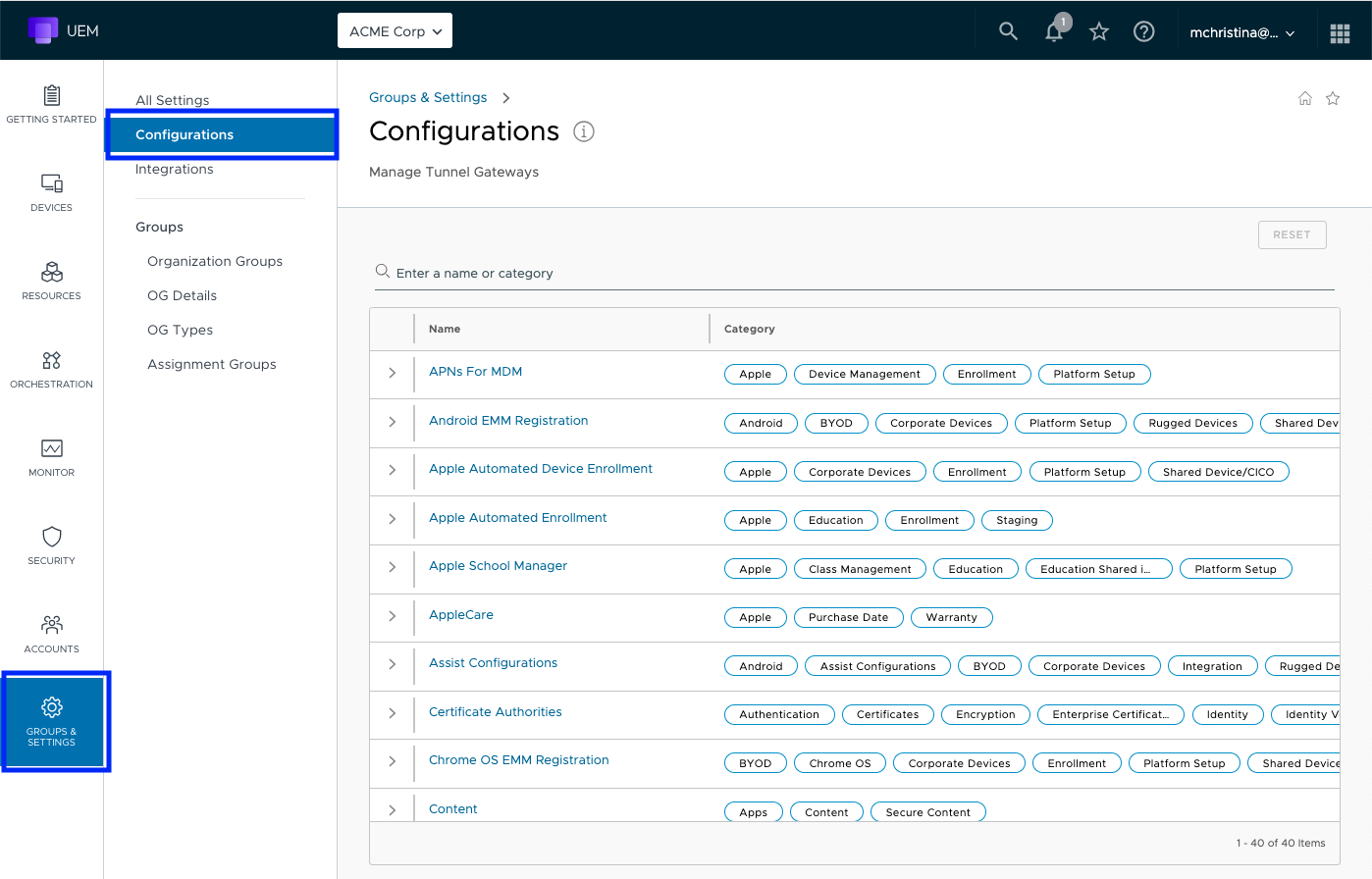
- Either use the search bar or scroll down and click Intelligent Hub.

- Depending on whether Omnissa Access is already integrated with UEM or not, choose one of the following options:
- If Workspace ONE UEM is already integrated with your Omnissa Access tenant, you will see the Hub Services URL populated. Click the LAUNCH button.

- If Omnissa Access is not already integrated with UEM, click GET STARTED.

- The Activate Hub Services dialog box appears.

- To find the Client ID and Secret for your Omnissa Access tenant, log into the Omnissa Access console or access the console via the Omnissa Connect portal. Go to Settings (top menu) > OAuth 2.0 Management (left menu) > UEM tab. Here you will find the Client ID and Secret for UEM integration. To learn more about integrating Workspace ONE UEM and Omnissa Access, see documentation here. To learn more about activating Hub Services, see documentation here.

- If Workspace ONE UEM is already integrated with your Omnissa Access tenant, you will see the Hub Services URL populated. Click the LAUNCH button.
- After activating Hub Services, click LAUNCH in the UEM console to access the Hub Services admin console. Hub Services can also be launched from the Omnissa Connect portal and in the Omnissa Access console under Integrations > Hub Configuration. In addition, Hub Services can be accessed from the MY SERVICES menu in the top right of the Workspace ONE UEM admin console.

Customizing the Intelligent Hub app catalog experience
The Hub Services admin console is where the admin customizes the Intelligent Hub experience for employees, including the app catalog layout.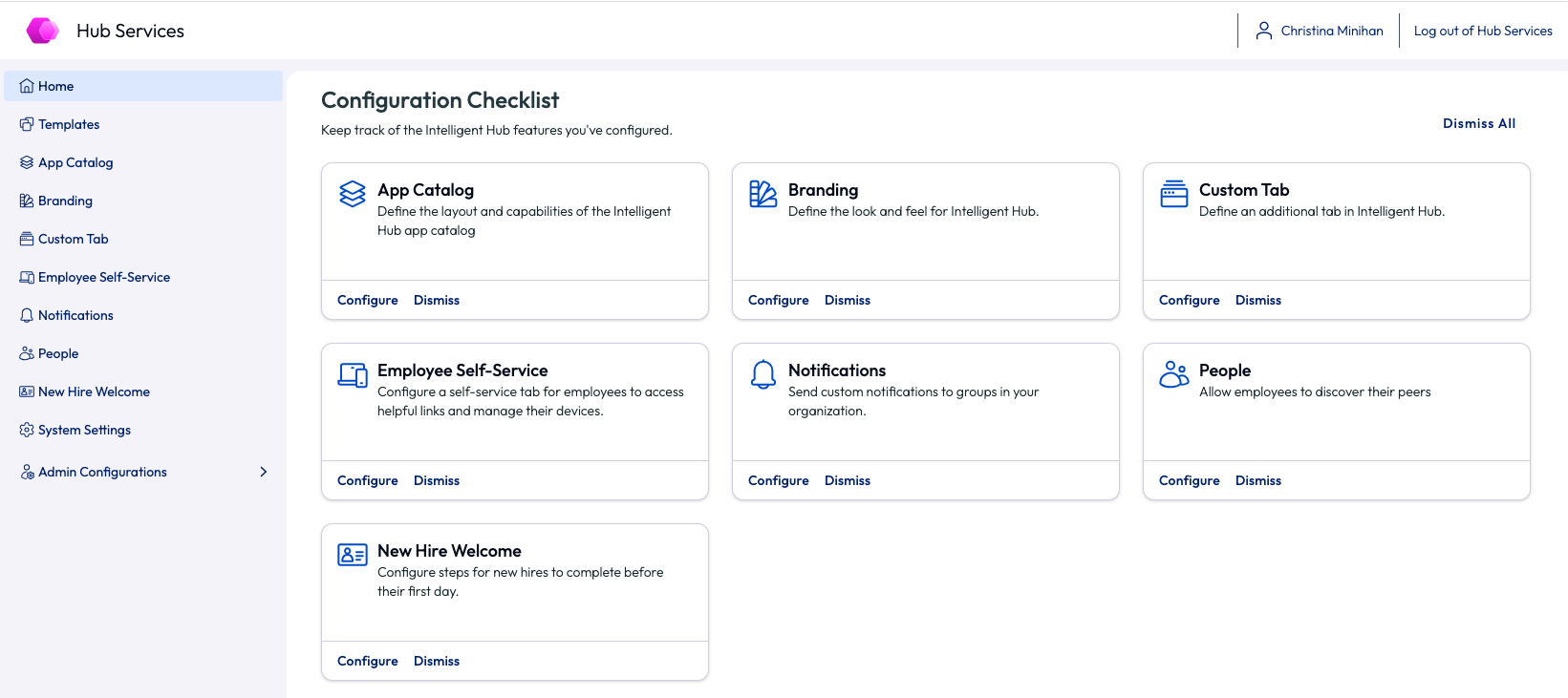
Figure 1: Workspace ONE Hub Services admin console
After enabling, the Intelligent Hub app catalog will be empty. 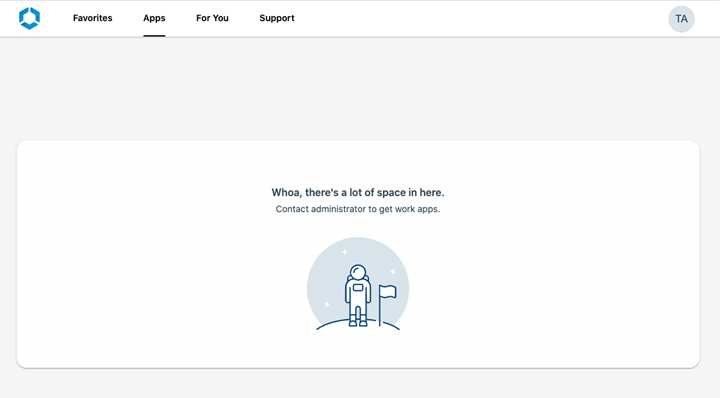
Figure 2: The Workspace ONE Intelligent Hub app catalog before configuring apps
The Intelligent Hub app catalog can be organized for users by creating sections such as New Apps, Recommended Apps, Categories, Promoted apps or a custom app section.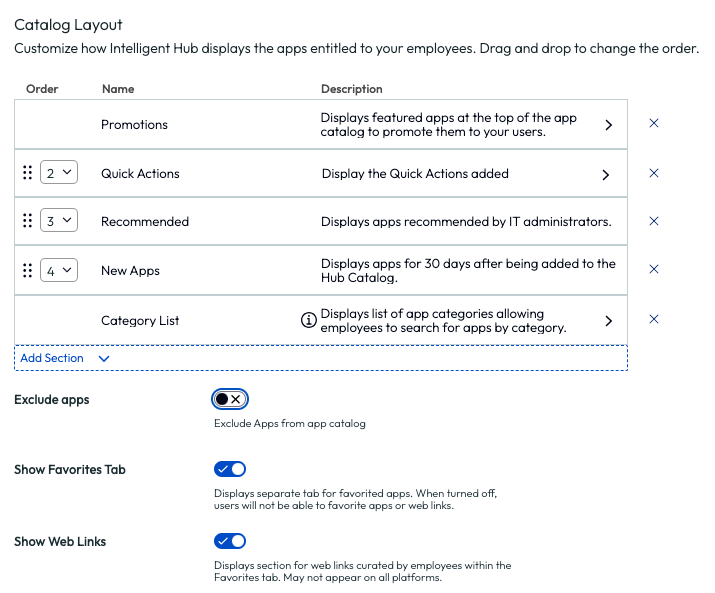
Figure 3: Workspace ONE Intelligent Hub app catalog settings
Intelligent Hub branding and colors can be customized as well, to fit the organizational theme.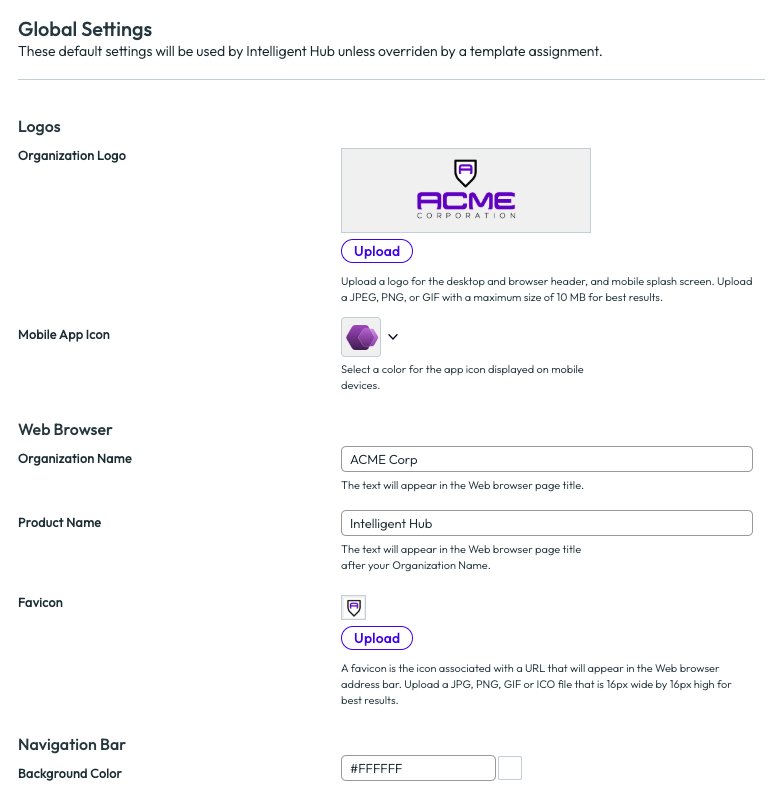
Figure 4: Workspace ONE Intelligent Hub branding settings
In addition, Hub Templates can be used to provide customizations for different teams within the same organization. To learn more about Hub Templates, see Using Hub Templates.
To learn more about customizing the Workspace ONE Intelligent Hub App Catalog, see Setting up the Workspace ONE Intelligent Hub app catalog in Hus Services.
Deactivating the legacy web clip app catalog in UEM
Prior to enabling the Hub Catalog experience for all your production users, we suggest that you test in a staging environment, a production environment, or both, using Hub Templates to target a smaller subset of end users. The use of Hub Templates allows you to pilot the features in production use cases without impacting the rest of the users.
Note: The legacy web clip app catalog and the Intelligent Hub app catalog are not mutually exclusive, which means that you can run them both in parallel. Therefore, if you wish to enable the Hub Catalog experience and still maintain the legacy web clip catalog for a duration of time while end users get used to the new experience, you can do so.
Enabling the Hub catalog experience is not disruptive to the already deployed legacy web clip catalog from Workspace ONE UEM.
You should inform your users of an upcoming change in Intelligent Hub from “agent-only” mode to a full digital workspace experience with app catalog.
Note: This assumes that you have the Intelligent Hub application installed and configured on user devices. If you do not have Intelligent Hub deployed, consider pushing Intelligent Hub as a managed application with Hub Services catalog enabled. To learn more about deploying Intelligent Hub to devices, see this documentation.
Once you have enabled the Hub catalog and are ready to deactivate the legacy catalog, navigate to the Publishing tab under Groups & Settings > All Settings > Apps > Workspace ONE > AirWatch Catalog > General > Publishing tab, and deactivate the Legacy Catalog options for each platform.
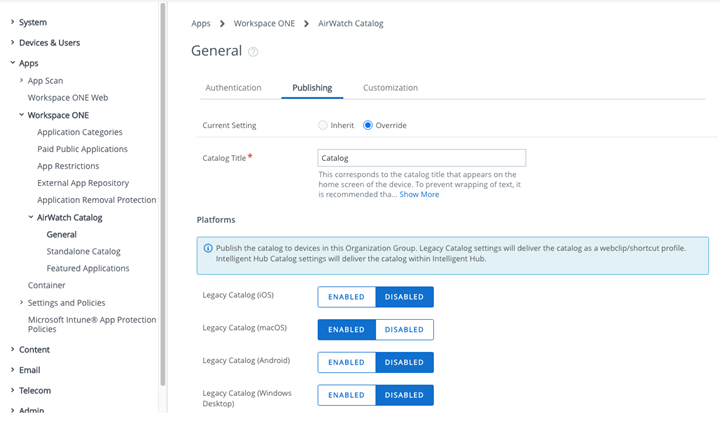
Figure 5: Deactivating the Legacy Catalog options
Note: If you have deployed a dedicated profile with the Workspace ONE Device Services URL endpoint for the catalog, remove or deactivate that profile assignment.
Creating a unified app catalog
Now that you have enabled the Intelligent Hub app catalog, this section is where you learn how to build out a truly unified catalog that includes web clips, SaaS apps, native mobile and desktop apps, and virtual applications and desktops.
Check out these overview resources for creating a unified app catalog in Workspace ONE Intelligent Hub:
- Accessing resources through Omnissa Access
- Managing desktops and apps that display in the app catalog
The prerequisite before combining Omnissa Access and UEM added apps within a single catalog is to ensure the source of authentication for Intelligent Hub is set to Omnissa Access. This setting is located within the Workspace ONE UEM admin console. Go to Groups & Settings > All Settings > Devices & Users > General > Enrollment > Authentication tab:
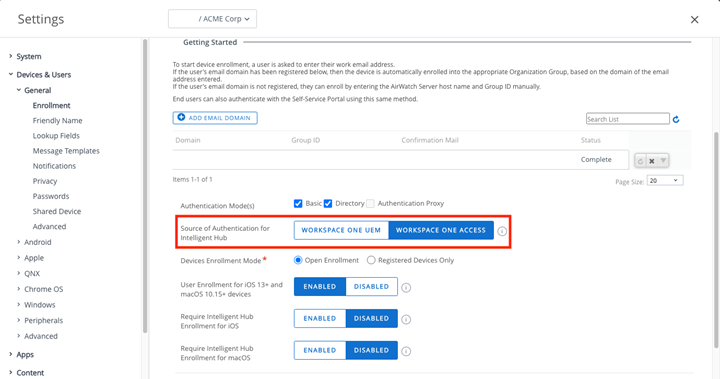
Figure 6: Setting the source of authentication for Intelligent Hub
WARNING: Switching the Source of Authentication for Intelligent Hub from Workspace ONE UEM to Omnissa Access requires end-users to reauthenticate. Additionally, some authentication flows, such as token authentication, are not supported in Omnissa Access. Therefore, make sure to test this change thoroughly in a staging environment before deploying in production.
Adding SaaS apps to the catalog in Omnissa Access
Review this documentation to learn how to add SaaS apps to the catalog via Omnissa Access.
Adding virtual desktops & apps to the catalog
To learn how to add virtual apps and desktops to the Intelligent Hub app catalog, see:
- Omnissa Access and Horizon integration
- Setting up virtual apps collections in Omnissa Access
- Providing access to Horizon desktops and applications in Omnissa Access
- Integrate Horizon Cloud Service - next-gen with Workspace ONE Intelligent Hub
Adding native apps to the catalog in Workspace ONE UEM
Review the following resources to understand how to add native applications via the Workspace ONE UEM admin console:
Windows App Management
macOS App Management
- Distributing Microsoft Office Apps to macOS
- Deploying a Third-Party macOS App
- Software distribution for macOS applications
iOS App Management
Android App Management
Summary and additional resources
This guide introduced the Workspace ONE Intelligent Hub app catalog, the procedures for enabling the catalog, customizing the employee experience and deactivating the legacy web clip app catalog. In addition, this guide provided the procedures for adding SaaS Apps, virtual apps, and native apps to the catalog in both Workspace ONE UEM and Omnissa Access.
Additional resources
The following resources can help you to enable Hub Services and customize Intelligent Hub:
- Setting up Hub Services to support Workspace ONE Intelligent Hub
- Activating Hub Services in Omnissa Access
- Setting up Hub Services for your organization
- Customizing the Workspace ONE Intelligent Hub app layout
- Setting up the Workspace ONE Intelligent Hub app catalog in Hub Services
Utilize these adoption kits to curate your end user-facing communication:
The following resources are also helpful:
- Workspace ONE UEM and Omnissa Access Integration
- Integrating Workspace ONE UEM and Omnissa Access
- Additional Hub Services features available when UEM and Access are integrated
- Intelligent Hub authentication settings
Changelog
The following updates were made to this guide:
| Date | Description of Changes |
| 2025/04/25 |
|
| 2024/11/11 |
|
| 2023/01/30 |
|
| 2021/07/07 |
|
Author and contributors
- Christina Minihan, Team Lead, Workspace ONE Product Specialists
Many thanks to the following for their contributions to this paper:
- Sergey Belous, Alumnus
- Marshall Anne Busbee, Director Product Marketing
Feedback
Your feedback is valuable.
To comment on this paper, contact Omnissa Technical Marketing at tech_content_feedback@omnissa.com.


